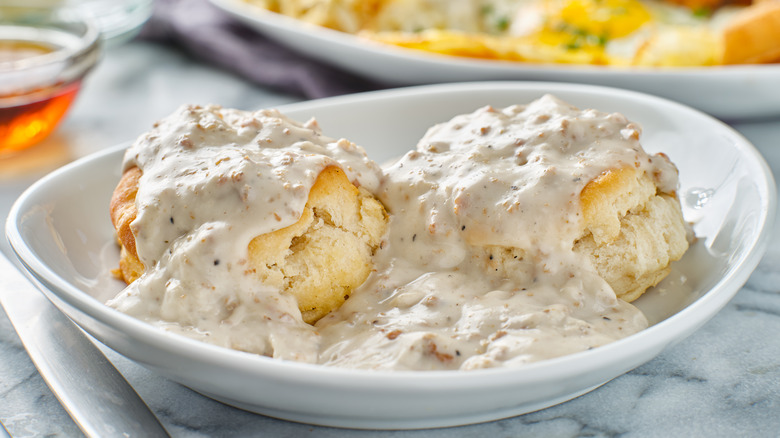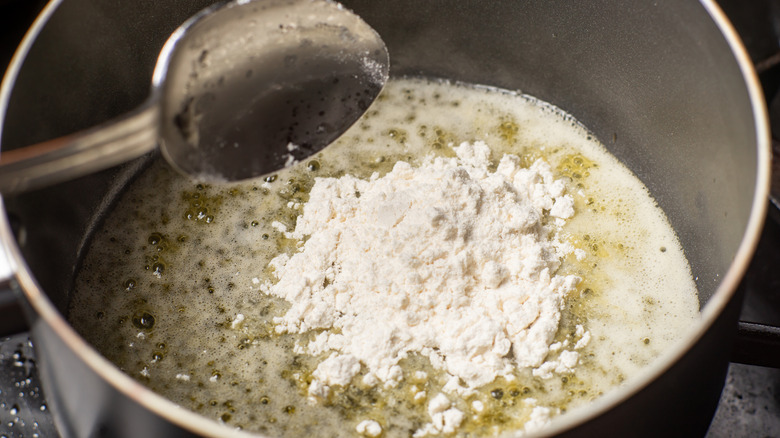Why The Southern Sauce That Adorns Biscuits Is Called 'Sawmill Gravy'
Any Southerner worth their salt (and pepper, flour, fat, and milk) knows biscuits and gravy. Sure, lots of sauces can be called gravy, but we're not talking about Thanksgiving brown gravy or indulgent Southern chocolate gravy. When most Southerners talk about gravy (particularly biscuits and gravy), we're talking about sawmill gravy — that delicious, creamy white sauce that often has cooked breakfast sausage folded inside. You may hear it called sausage gravy, white gravy, or country gravy these days, but historians believe sawmill gravy got its original name for its stick-to-your-ribs quality, perfect for sawmill workers in 1800s Southern Appalachia.
If you've ever eaten sawmill gravy — and honestly, if you haven't you need to stop reading right now and go make some — you know that it's rich and hearty even on its own. Paired with biscuits, it's a meal that can keep you full for hours. It's also cheap and easy to make, requiring little more than sausage, flour, salt, pepper, and milk. Interestingly, however, the name sawmill gravy may not just be about who ate it. Some historians believe that sawmill gravy was originally made with cornmeal instead of flour, and some people speculate that the sawmill workers likened its gritty texture to having sawdust inside.
The ingredients for gravy were easy to come by
If you haven't put together the timing yet, sawmill gravy was born from post-war necessity. The American Revolution was expensive for all parties, but Southern colonies were particularly hard hit. Luckily, pork, flour, and milk were all still readily available compared to other foodstuffs, making sawmill gravy an easy way to feed a family. This was furthered after the Civil War when logging was the primary industry and poor Southern families used gravy to feed their hardworking families.
Sawmill gravy wasn't the only gravy on the block, however. Though pork, flour, and milk were more readily available than some ingredients, they were still hard to come by for many poor families. Other Southern gravies like tomato gravy (with no dairy) and red-eye gravy (with no dairy or flour) were easy ways to round out a meal and are still enjoyed by many Southern families today. Still, while they're all delicious over a fresh buttermilk biscuit, nothing compares to the super-filling sawmill gravy and biscuits.

